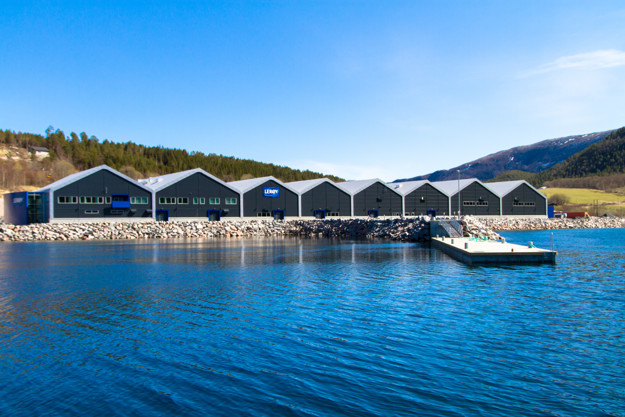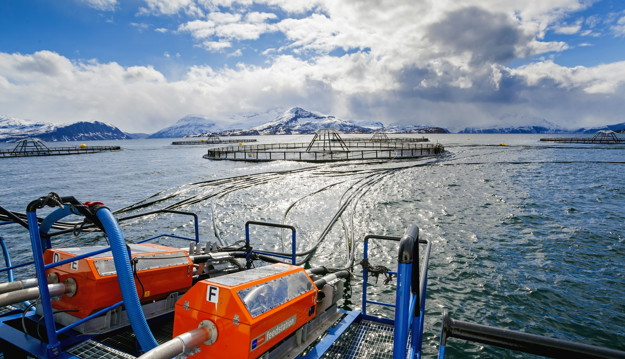The production and farming of salmon is a resource efficient and climate-freindly form of food production. Lerøy have locations all over the coast of Norway ranging from the county Rogaland in the south all the way up to Finmark in the north.
It takes approximately 2-3 years from a salmon roe hatch until a finisihed grown and harvest ready salmon. Through these years the salmon goes through different life stages.
Norway have been a pioneer in farming of salmon, and have since the break through of farming in sea pens in the 1970's kepts its position as the worlds leading farmers of Atlantic salmon.
Broodstock salmon is the ancestors to the Lerøy salmon and originates from norwegian rivers where traits from the wild salmon was selcted and bred. Extensive breeding have improved characteristics as growth, color and quality of finished products.
The productions of salmon starts in rearing tanks on a land based fresh water farm. Just as for wild salmon in rivers, the fertilization of the roe is done in fresh water. The roe is ready to hatch after approximately 60 days at maximum 8°C before it hatch (or approx. 500 daydegrees).
When the roe hatch into alevins which have yolk sacs which they use for food the first period of their life span. After 4-6 weeks when the yolk sacs have been used up the alevins have to start to feed. At this point they are known as fry and have been weaned over to formulated feed known as pellets. Then the juveniles are moved over from the hatching tank to a larger rearing tank. The juveniles known as parr for 1,5 months (480 daydegrees at maximum 12 °C).

After 8-15 month in freshwater the salmon is ready for transport to the sea. It ways now approximately from 100 gram up to over 300 gram, depending on location. Since the hatch the juvenile salmon have gone through a transformation from parr to smolt in a process called smoltificatio, where the salmon are getting ready to adapt to the life in sea water.
Before the transfer into sea the smolt is vaccinated to be ready to life a robust life in sea. In the future Lerøy may also wait to tranfer smolt to sea until it have reached 500 gram so thet the life span in sea water is shortened and may also be a solution to reduce the problem with sealice.

The smolts are transferred to the sea farms with wellboats and put in sea cages. These sites are called production farms and extensive farming at sea. The salmon is grown at the farm for 14-22 months until fulle grown. Optimum sea currents, cold water and oxygen rich fjords is a blessing for the production of atlantic salmon.
The cages contains 97,5 % water and maximum 2,5 % salmon. This is the maximum allowed density, but the normal density ranges below the maximum allowed density.
The cages contains 97,5 % water and maximum 2,5 % salmon. This is the maximum allowed density, but the normal density ranges below the maximum allowed density.
When the salmoon have reached 4-6 kilos, it is ready to be transported from the farm to the harvest plant. The transportation is with well boat. The well boats have big tanks (wells) with sea water, and the salmon is transported alive to the waiting cages at the harvest plant under strict survaillance of oxygen and other parameters. The transportation takes from 3-20 hours.
The salmon is placed in waiting cages outside the harvest plant. The purpose is to realse the well boats transport capacity, calm down the salmon and provide the harvest plant with contiounious supply of salmon. The salmon waits in the cages from 24 hours to maximum 6 days before it is gently pumped in to the factory.
The salmon is gently pumped and swim up current in to the stunner. The salmon is in regards of the fish welfare properly stunned before it is bled. This is also to maintain the quality of the salmon and also if the salmon is not stressed we get a better product.
Salmon is chilled and packed with ice to remain the good quality. The correct packaging also contributes to remain the shelf life, freshness and quality of the salmon. For frozen products quick freezing is key to preserve quality.

